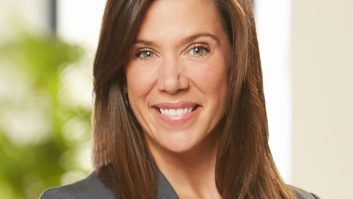Los Angeles — Best Buy outlined more details of its Customer Centricity program, which is being expanded from 32 test stores to up to 110 additional locations in the United States during fiscal 2005.
At its annual analysts’ meeting here on May 3, Brad Anderson, vice chairman/CEO, and other Best Buy executives revealed details of the strategy that has been in development for 18 months. (See also Best Buy Execs Offer Details On Expansion Plans
In effect the Customer Centricity program will alter the chain’s corporate culture by focusing on the most profitable customer groups who shop at Best Buy, and training the rank-and-file full- and part-time store employees to provide better service. As Anderson put it, “This enables us to engage more deeply with customers by empowering employees to delivered tailored products, solutions and services to customers through our stores, Web sites, call centers and in-home services.”
The whole idea is to listen to the feedback from the people who deal with Best Buy customers every day — the store employees and managers — and have corporate management give them the tools to do their job. The goal is to “increase our competitive advantages, boost our market share and deliver superior financial results,” Anderson said.
Best Buy has identified five initial customer segments: the affluent professional who demands the latest technology and best service; the active, young male consumer who wants technology and entertainment; the family man who wants technology that improves his and his family’s life; the busy suburban mom who wants to enrich her children’s lives with technology and entertainment; and the small business customer who can use Best Buy’s product solutions and services.
Each store in the Consumer Centricity plan will be adapted to serve at least one dominant customer segment shopping at the store. Employees will be trained to focus on specific customer groups rather than just product categories.
This decentralization enables the local store managers and the employees to come up with a variation on product offerings, customer service, promotions and store design, the chain said. Store associates measure the results of all investments in terms of growth in segment revenue and return on investment, a metric taught to all employees as part of the program.
The 32 lab stores in the fiscal fourth quarter had comp store sales gains of 7 percent higher than other Best Buy stores in the United States. The lab stores’ gross profit rate was about 50 basis points higher than the average U.S. Best Buy stores. But expenses were 240 basis points higher than typical Best Buy stores, but that is a factor the chain said will be reduced as its labor model and economies of scale will reduce costs and improve profitability. So far the company has spent $50 million in store capital expenditures for Customer Centricity stores in fiscal 2005.
The 110 stores to get the Consumer Centricity makeover will be in Arizona, California, Nevada, Oregon and Washington, and will be implemented prior to the holiday season.












